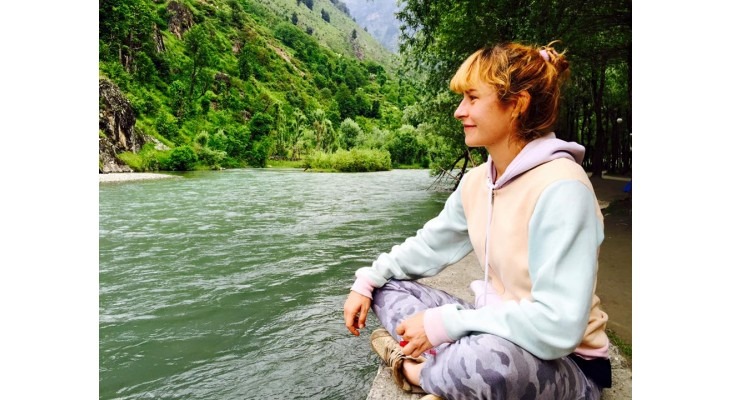
MARTHA VANDUZER-SNOW'S EFFORTS TOWARDS RURAL DEVELOPMENT & INNOVATION
While digitalization, e-commerce and start-ups are shining in the limelight, rural India is still in a dark corner, gnawing with the need of breakthroughs in sanitation – and that is just what Marta Vanduzer-Snow has paved the way for!
I have been living and working in rural development and innovation in Uttar Pradesh and Delhi for the past five years. In ten villages, I helped build over 180 evapotranspiration toilets (EVT-T), one of the area’s first permeable roads, slow sand drinking water filter, solar powered homes and more.
Years ago, all my work started with a survey in a village in Jagatpur, UP. We asked every household what they wanted for their homes and communities and almost everyone expressed their need for toilets – which is how I started working on them.
We showed them many different toilet models: twin-pit, dry composting, the EVT-T, amongst several other models – yet they consistently chose the EVT-T model. This is how we started working on this toilet specifically – by listening and then acting on it.
When we listen, it is important to hear different perspectives. I think too often we reduce complex social things to single causes. Take toilets. In India, there is agreement on the problem: the unused twin-pit toilets. But there is no consensus on the cause. We hear different perspectives, which focus on behavior and caste.
I find it strange that the same people who use toilets that flush, cite caste and behavioral problems. Caste does not affect my choice and I would prefer any alternative where I do not have to clean composted human waste.
I think we disrespect the men and women of India’s villages when we limit them to caste and behavior. I think these are causal factors and I’m not arguing to ignore them, but to see them in a larger context that includes a space for leadership and so too design.
In sanitation, I explore the role of design. My goal is to make things that people use, and things that don’t harm the people or environment in any way.
The single largest advantage of the evapotranspiration toilet is that it is self-cleaning – there is no human intervention in the tank. I believe the fact that the tank cleans itself is one reason people use our toilets.
When you have listened, and you are ready to act, everything going forward is a series of collaborations. Collaboration is the required part of producing anything.
Making these toilets, promoting their use, building awareness, improving them and scaling them, are all a series of collaborations.
Collaboration requires practice, patience, flexibility and compassion. Your team is everything and you only go as far as your team.
The end user, your customer, is a part of your team. How you respect and include them in your design and delivery, determines how far you go. The end user helped improve our toilet model through their feedback. Monitoring toilet usage and performance with the users is an important part of the work and improving this model. We thereby followed up with the homes, conducting several user surveys.
We never lecture the people in the villages. We use art and street theatre to encourage usage and build awareness owing to collaborations with Ayushya George and Khanabadosh.
This is how we approached what Community-Led Total Sanitation calls ‘triggering’. We ask those not using the toilet as to why they do not. User feedback, creating a genuine dialogue with your market and respecting and responding to the users’ feedback is key to the success of an idea.
Making anything is a spiral cycle of listening, acting, and collaborations. It is hard and scary and can be slow. But for me, this is one of the most exciting and rewarding experiences of my life.
If you want to do something, start with small steps. People will join you. And I bet they already have.

























